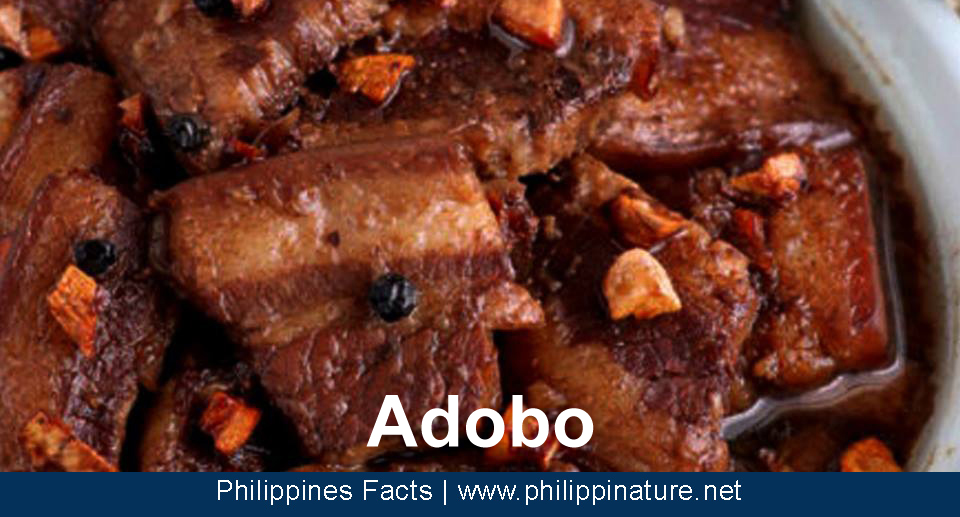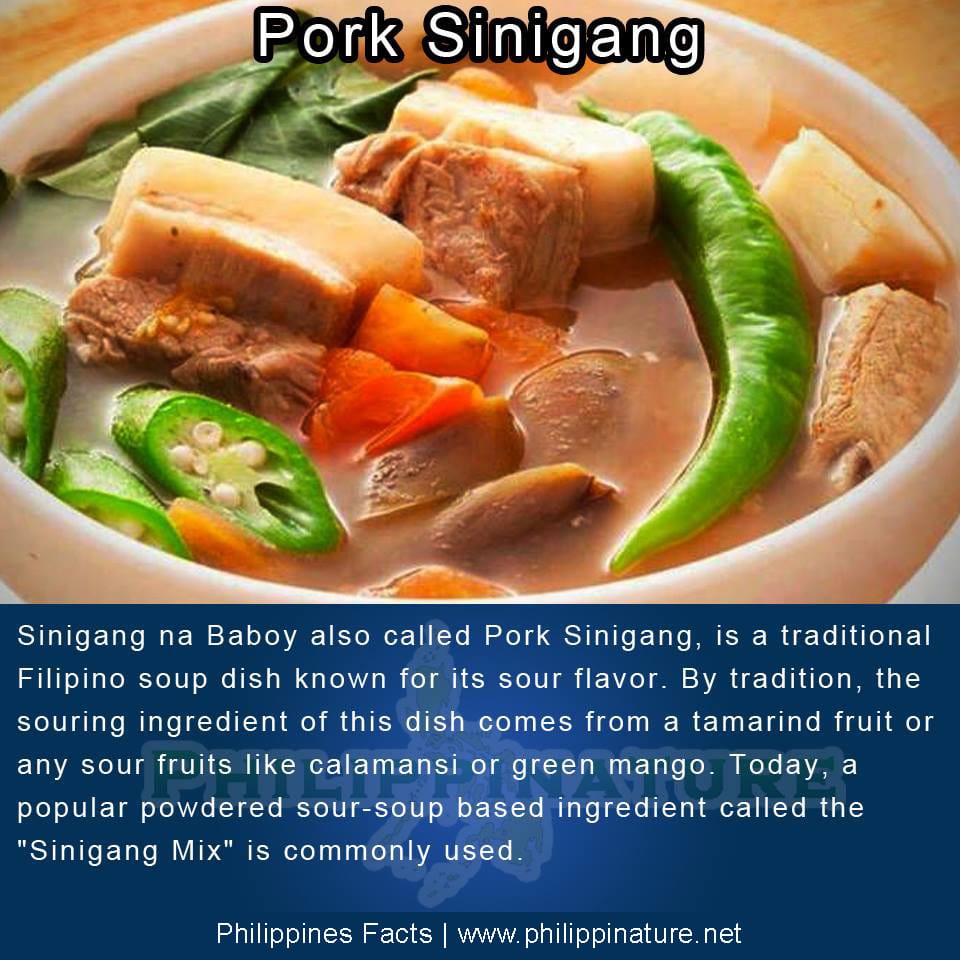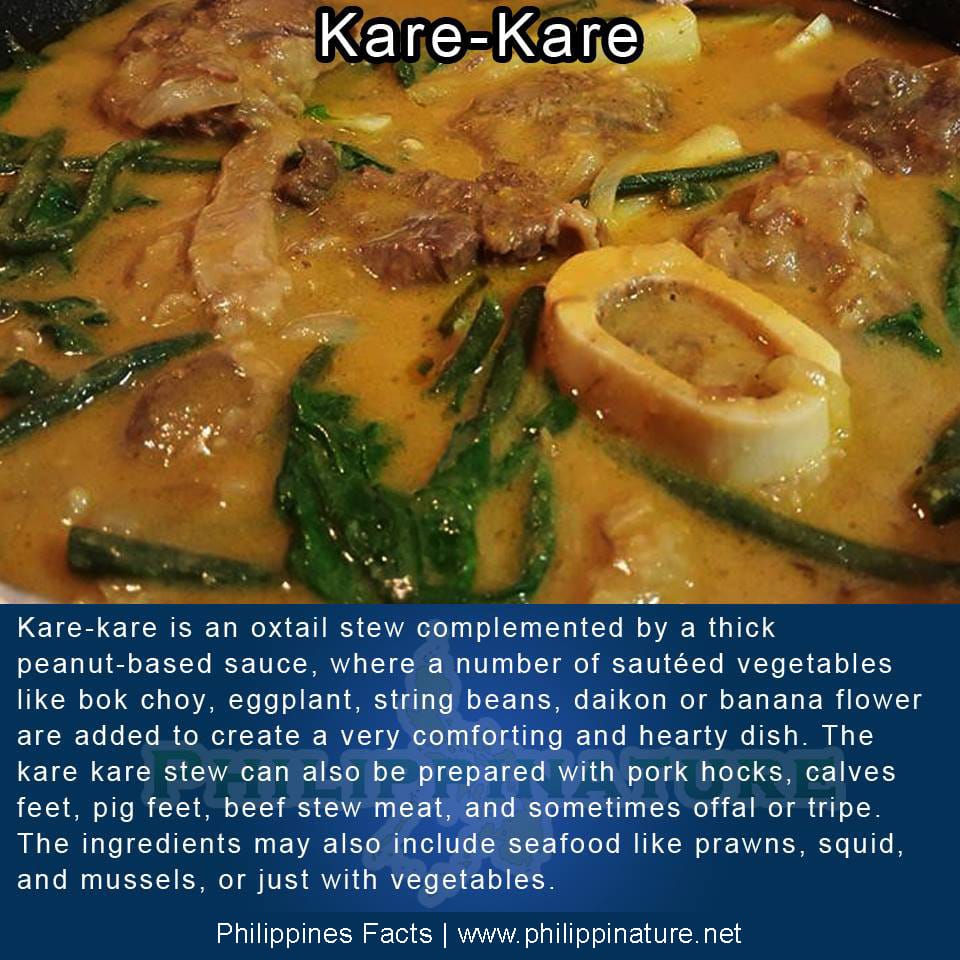The Filipino Cuisine – Famous Dishes to Savor

Filipino cuisine is a vibrant blend of flavors, cultures, and traditions, reflecting the archipelago’s diverse history. From the influence of Spanish colonization to the infusion of Asian and American culinary elements, each dish tells a story. Here’s a look at some of the most famous Filipino dishes that you must try, whether you’re visiting the Philippines or seeking to explore its culinary delights from afar.
Adobo – The National Dish
No discussion of Filipino food is complete without mentioning adobo. This savory stew is made with meat (usually chicken or pork) marinated in soy sauce, vinegar, garlic, and spices before being simmered until tender. Each region has its own twist, with variations including adding coconut milk or hard-boiled eggs. Adobo’s balance of salty, sour, and umami flavors makes it a beloved staple in Filipino households.

Sinigang – A Taste of Sourness
Sinigang is a sour soup that showcases the Philippines’ love for bold flavors. Typically made with pork, shrimp, or beef, the soup is flavored with tamarind, tomatoes, and a variety of vegetables. Its tangy profile, combined with the warmth of the broth, makes it a comforting dish, especially during rainy days. There are regional variations as well, with some using green mango or calamansi for a unique twist.
Lechon – The Celebration Dish
No fiesta is complete without lechon—a whole roasted pig that’s often the centerpiece of celebrations. The skin is perfectly crispy while the meat is tender and juicy, infused with flavors from herbs and spices. In Cebu, lechon is particularly famous for its distinct seasoning, making it a must-try for anyone visiting the region. A side of liver sauce or vinegar dipping sauce enhances the experience even further.
Pancit – Noodles for Longevity
Pancit refers to a variety of noodle dishes in the Philippines and symbolizes longevity and prosperity. There are many types, such as Pancit Canton (stir-fried egg noodles with vegetables and meat) and Pancit Malabon (thick rice noodles with seafood and a rich sauce). These dishes are often served during birthdays and special occasions, representing well-wishes for a long life.
Halo-Halo – A Sweet Escape
On a hot day, nothing beats a bowl of halo-halo. This popular dessert is a delightful mix of crushed ice, sweetened fruits, jellies, and beans, topped with leche flan, purple yam (ube), and a scoop of ice cream. The name “halo-halo” means “mix-mix,” reflecting the fun of combining various ingredients for a refreshing treat. It’s a colorful and textural explosion that embodies the creativity of Filipino sweets.

Kare-Kare – A Rich Oxtail Stew
Kare-Kare is a rich and hearty oxtail stew that features a thick peanut sauce. Traditionally served with bagoong (fermented shrimp paste), it’s a favorite during special occasions and family gatherings. The dish is often accompanied by vegetables like eggplant, string beans, and banana heart, creating a harmonious blend of flavors. Its unique taste profile sets it apart, making it a must-try for adventurous eaters.
Lumpia – Filipino Spring Rolls
Lumpia are Filipino spring rolls that come in various forms, the most common being Lumpiang Shanghai—a crispy version filled with ground pork and vegetables. These bite-sized treats are often served as appetizers and are a favorite at parties. Their crunchy exterior and savory filling make them irresistible, especially when paired with sweet and sour sauce.
Filipino cuisine is a celebration of flavors, history, and culture. Each dish offers a glimpse into the country’s rich culinary heritage and the warmth of its people. Whether you’re indulging in the comfort of adobo or refreshing yourself with halo-halo, these famous Filipino dishes promise a delightful experience. So, gather your ingredients, invite some friends, and embark on a delicious journey through the heart of the Philippines!
References:
https://www.westernunion.com/blog/en/traditional-filipino-dishes/
https://www.hotels.com/go/philippines/must-try-filipino-foods










